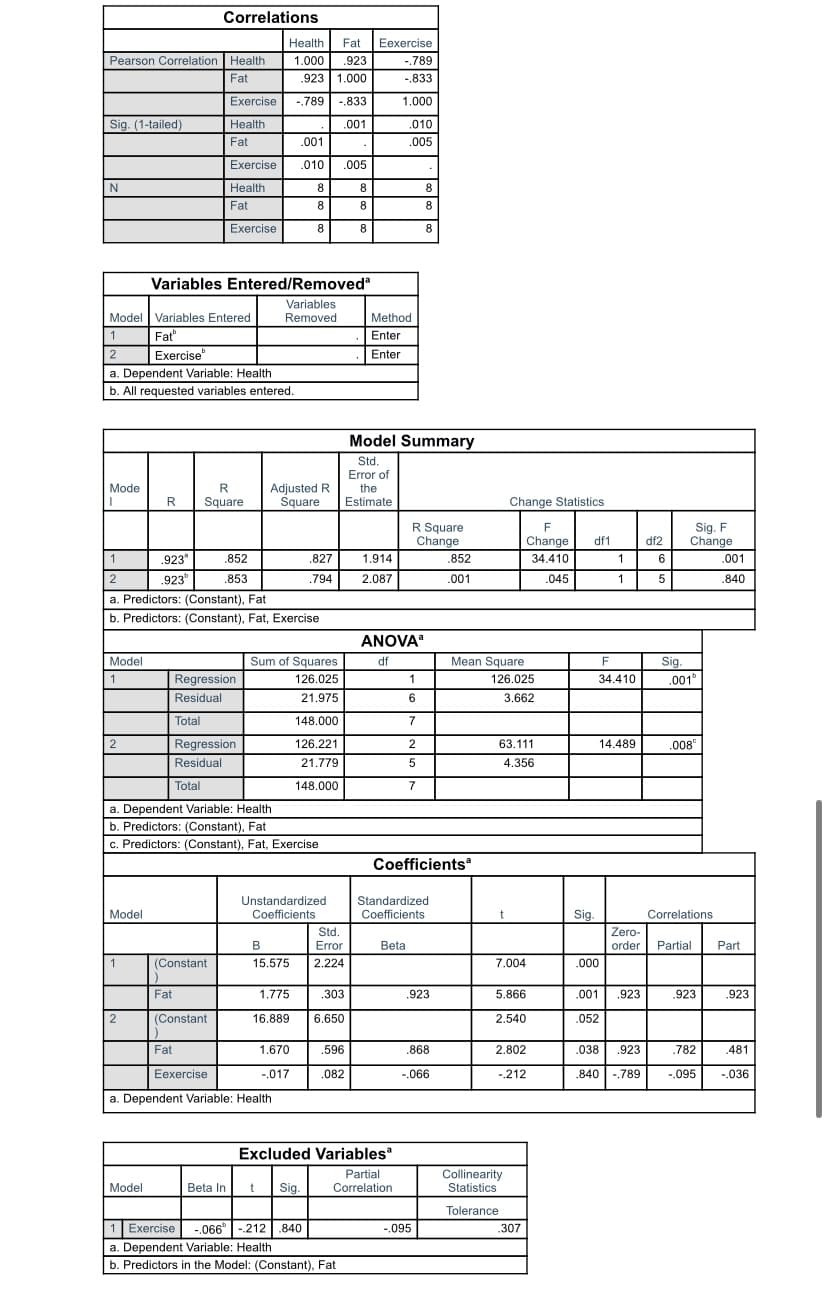A sport psychologist wanted to test the extent to which daily intake of fat in grams, and amount of exercise (in minutes) can predict health m=(measured using a Body mass index {BMI} scale in which higher scores indicate poorer health. Using the da1ta below: Fat (grams) . Exercise (minutes). Health (BMI) 8. 34. 32 11. 10. 34 5. 50. 23 9. 15. 33 8. 35. 28 5. 40. 27 6. 20. 25 4 . 60. 22 -the psychologist concluded exercise did not provide any additional information because a.) R2 = .923 b.) Adjusted R2 =.853 c.) B= -.017 d.) F change = .045; p>.05 -The linear equation resulting from this is (hint: let SPSS make the decision) a.) Ŷ= 1.670X1 + (-.017)X2 + 16.89 b.) Ŷ= (1.775)X1 + (1.670)X2 + 16.89 c.) Ŷ= .923X1 + (-.789)X2 + 16.89 d.) Ŷ= 16.89X1 + (-.017+1.670)X2 -Did doing exercise provide significantly to the health of the athletes? Provide the regression statistics that show the effect of exercise beyond the effect of body fat.
A sport psychologist wanted to test the extent to which daily intake of fat in grams, and amount of exercise (in minutes) can predict health m=(measured using a Body mass index {BMI} scale in which higher scores indicate poorer health. Using the da1ta below:
Fat (grams) . Exercise (minutes). Health (BMI)
8. 34. 32
11. 10. 34
5. 50. 23
9. 15. 33
8. 35. 28
5. 40. 27
6. 20. 25
4 . 60. 22

Trending now
This is a popular solution!
Step by step
Solved in 5 steps




